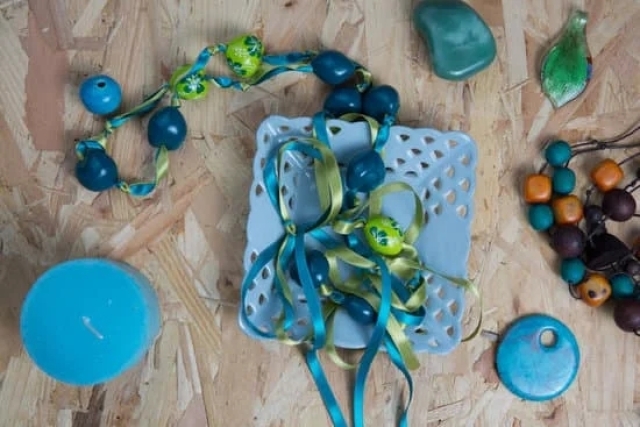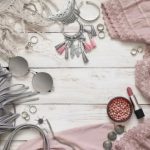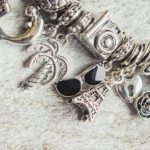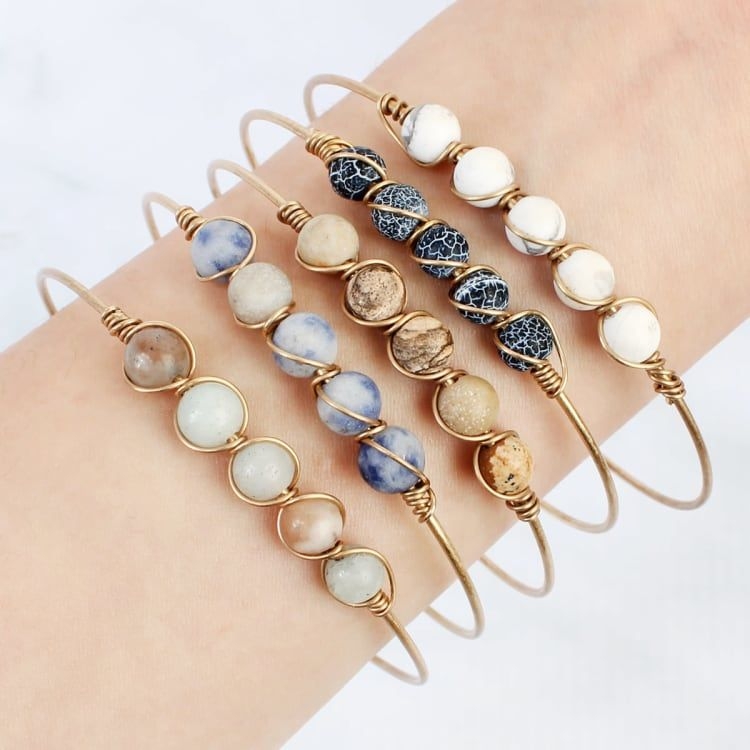Pearl beads jewelry making is a popular hobby which can be enjoyed by both adults and children alike. It has become incredibly popular as it allows people to create original pieces of jewelry that reflect their unique personal style. Using colourful pearl beads, you can create stunning necklaces, bracelets, earrings, brooches, anklets and more.
It’s also a great opportunity to bond with friends or family, working together on art projects in a creative and fun way. Although the basics are easy to learn, the possibilities are literally endless when it comes to designing your own special pieces of pearl bead jewelry.
Starting out with Pearl Beads Jewelry Making Getting started with pearl beads jewelry making is relatively easy. The first step is acquiring the necessary materials such as pearl beads, strings and clasps. You might want to pick up some finds for attaching beads if you’re looking to make earrings or brooches so the components hang correctly once worn.
Thicker stringing material will help your finished piece remain solid over time while many additional items like beading needles and magnifying glasses are invaluable tools for precision crafting on details too small for fingers to manage otherwise. Once you have all the equipment ready, it’s time to begin creating your masterpiece.
Design Inspiration: Combining Pearls Semi-precious gemstone combinations alongside pearls can often provide an eye-catching twist which works well with many variations such as fine beaded necklaces that gradually change from pearls into gemstone drops or even a bold necklace heavy in semi-precious stones dangling mini pearlescent bead clusters down its centrepiece.
Experimentation will help find the right balance between elements like color, texture and weight when creating something truly beautiful and unique based around pearls for anyone lucky enough to wear them.
Choosing and Caring for Your Pearl Beads
When searching for pearl bead jewelry materials, you should look for pearls that are large and perfectly round in shape. This will ensure your beads are the highest quality. You can find a wide variety of pearl beads on the market ranging from freshwater to saltwater varieties.
Not only do you need to choose which type of pearl will best fit your project but you also need to pay attention to color and size options. The measurements displayed on product listings are most often in millimeters so make sure you check this when making your selection.
Once you have chosen the perfect pearl beads for your desired project it is important to care for them properly. You should try not to store the beads in direct sunlight over an extended period, as this could damage them or cause their color to fade.
It is best to keep them sealed in a cleaning solution if they are not currently being used as this can help prevent tarnishing or discoloration from occurring. Pearls will naturally absorb moisture from other items, so it’s always best practice to keep them separated from other objects while they’re stored away, especially metals that may corrode them over time.
Designing and Stitching Your Pearl Bead Jewelry
There are many techniques when it comes to designing jewelry with pearls. A popular method involves stringing the pearls onto wire or nylon thread and knotting after each bead has been added, leaving enough room between each piece for extra decoration such as gemstones or spacers.
Another widely used technique is peyote stitch which acts like a net, trapping each individual pearl bead within its weave structure and forming patterns across the surface of the design’s formwork. This couture look can be adapted based on your preferences by using various shapes, colors and sizes of pearls as well provide endless possibilities when creating pieces of jewelry with a unique look and feel all your own.
Whichever type of stiching method is used – whether traditional windows styles such as brick stitching or more modern creative approaches – proper tension must be applied throughout the entire process in order for the design structure not become distorted under stress (for example while wearing).
Different types of materials such as thread and cord require different amounts of tension during assembly so make sure you review instructions carefully before starting any weaving work with your object pieces so detail aspects such as loop size and spacing remain consistent throughout assembly progress towards completion.
Stringing Techniques for Pearl Beads
Pearl beads jewelry making is a traditional craft that utilizes an array of colorful and eye-catching pieces for both personal wear or as gifts. One of the most critical components of this type of jewelry is how they are strung together, often referred to as “stringing techniques”. There are several basic techniques that will help create beautiful pearl bead creations and showcase the radiance they naturally have.
Crimping Technique
The crimping technique is a popular technique used when stringing pearls for necklaces, bracelets, earrings, etc. This method is completed by clamping part of the metal string on one end and looping it back around itself multiple times before folding to secure. This tautens the thread to hold beads in place and prevents them from moving out of place even with rigorous movement such as dancing or running.
Knotting Technique
Knotting is another essential skill to learn when it comes to stringing pearl beads for any kind of jewelry-making project. It helps add texture by creating additional visual interest between each bead and ensures stability when worn against skin or clothing so the beads do not shift unexpectedly after being strung together.
Knots should be secure but be careful not to make them too tight in order not to damage the individual pieces strung onto the cord or wire. It’s best practice to tie knots between each piece which will help ensure they stay securely in their designated positions along the finished product’s length.
Thread Choices
Depending on the desired look for your project, there are several options you can use to get your pearls connected in a chosen arrangement:
- Nylons threads such as KLEINFELDER
- Capsules threads such as POLIABOND
- Silk threads including SATEN Silk and Organzasilk.
Enhancing Your Jewelry with Different Findings
Pearl bead jewelry making is becoming increasingly popular among people of all ages. Pearls have a classic and timeless beauty that gives their designs a sophisticated, romantic, and luxurious look.
Whether creating necklaces, earrings, bracelets, or rings; pearl beads can help you craft unique pieces of jewelry that reflect your personal style. No matter if it’s statement-making pieces for special occasions or something more delicate for everyday wear; the possibilities are endless when it comes to creating with pearls.
To give your pearl jewelry an even more personalized aesthetic; finding is the key to allow this type of creative freedom. Findings are a critical component when it comes to crafting any type of jewelry, but especially those featuring pearls. The findings include both the materials and components used to create a piece of jewelry such as clasps, bails and pendants.
As these parts will often affect the overall design and structure; taking the time to understand which ones best suit your specific intention is crucial. It’s also important to remember that many findings come in different metals such as sterling silver or gold plated – giving you the ability to make each piece your own.
One example would be rings made from pearls. When looking for clasps used on rings, there are so many available options such as lobster claw or hook & eye clasps in either plain or ornate designs. Deciding which one works best for your desired look can be easily done by simply considering practicality and aesthetics together – giving your pieces perfect closure points without detracting from the overall look of your design.
After finding the right clasp combination it’s easy to start exploring fun components like petite charms or pendants that attach onto jump rings at key locations within the design for truly unique effects. From subtle peacock accents to vibrant Swarovski crystal pendants – allowing yourself room for experimentation when selecting additional features will lead you towards amazing results.
Beyond incorporating exciting new elements into each piece via findings; another great way to customize pearl-based jewelry items is simply opting for certain colored pearls instead of traditional white or cream tones – opening up near limitless possibilities in terms wants ends may exist while making however you dream accessible.
Finding a various shades ranging from light pastels like pink and lavender all the way up towards saturated twilight colors such as dark red – being able choose stylishly tinted pearls coaxes out even further possibilities when allowing imagination take over.
Essential Tools for Crafting Pearl Beads Jewelry
Pearl beads jewelry making is an art form that has grown in popularity over the past decade. With access to a wide variety of tools, materials, and special techniques, crafting beautiful pieces of jewelry with pearl beads has become more accessible and enjoyable than ever. In this article we will discuss the essential tools for making pearl beads jewelry.
Beading Needles and Thread
The most basic tool needed for creating pearl bead jewelry is beading needles and thread. The beading needle’s small size makes it ideal for passing through small pearls without unnecessary wear and tear to the hole or surface of the bead, while its flexibility allows it to easily maneuver around other beads.
The thread must also be strong enough to support the weight of your pearls without breaking throughout the crafting process. Nylon thread is a popular choice among crafters because it is more durable than cotton or linen threads.
Tools for Working with Wire
If you plan on weaving wire into complex shapes or connecting components together, a range of special tools are necessary. These include, but are not limited too clippers, flat-nose pliers, round-nose pliers, and miniature screwdrivers (for adjusting rings).
When picking out these tools ensure they match your wire’s thickness so that they do not cause any damage to it while cutting and bending it into shape. It’s also important that you inspect really well if there are any burrs inside your jumpsuits clamp since these can snag on fabrics or weaken wires over time when stringing them together.
Miscellaneous Tools
In addition to supplies like beading needles and wire working tools there are other miscellaneous tools that make your life easier when crafting pearl beads jewelry such as a tweezer set for cleaning up areas where there may be extra strings from previous work.
A bead scoop can also help prevent spilling individual pieces when handling large amounts by hand and something like a microscopes magnifying lens can assist you during delicate tasks such as placing tiny gems and crystals onto settings humanely.
Other items like bead mats or boards can help make counting out certain sequences easier on both yourself and your project as well.
Creating Patterns with Pearl Beads
Pearl beads are an incredibly versatile and popular jewelry-making component. Because they come in a variety of sizes, shapes, and colors they make great additions to any design. They add depth, texture, and can really bring an entire look together. There are so many creative ways of using them that the possibilities are truly endless.
The most common way of using pearl beads is to create patterns. This is done by taking several sizes or colors of the same type of bead and stringing them together in a pattern. The most popular pattern for pearl beads is the classic round shape.
This pattern is created by beginning at the center with one larger bead, surrounding it with three medium size beads, then surrounding those three with five smaller beads; repeating until you have created your desired length or shape. This technique gives an intriguing 3D effect to necklaces promoting texture from all angles.
Stringing Beads
Once you have selected what type of pearl beads you would like to use for your designs, stringing them onto a wire or thread is the easiest way to incorporate them into jewelry making designs. For projects involving two-toned beads try using two spools of different colored thread for a blend that looks striking against each other while still subtly connecting the two hues together.
A wire also works for this but can be more difficult as it tends to kink up easily which can alter your desired shape or design completely. If you’re looking to keep your design symmetrical consider using a centerpiece where all the ends around it are joined in a statement piece that stays balanced throughout its entirety regardless of movement or wear throughout time.
Pearl Bead Color Combinations
Adding different colored pearl beads into your pattern designs offer an even wider array of creative possibilities that leave no room for boundaries when it comes to design options available on the market today.
Layering varying shades from white and light pink to deep purple and black offers visual interest that will draw attention from every angle without compromising on elegance or sophistication no matter what age group woman they may be targeting in their audience; this plus their shiny surfaces inject even more dimension into projects where color plays a critical role adding elegance all around.
Additionally, pairing metallic accents brings even further dynamics and flair when needed while still maintaining timelessness if desired – making these gems perfect heirloom pieces no matter how heavy-handed one chooses to go with utilizing pearls’ true versatility.
Showcase of Different Pearl Beads Jewelry Making Projects
Personally I am passionate about making jewelry – especially pearl beads jewelry. It is so gratifying to see a project finished when you are done creating necklaces, earrings or bracelets craft. As someone who has been engaged in pearl beads jewelry making for years I can affirm that it can be a fun and enjoyable hobby.
The great thing about this artwork is that you have the freedom of expression to design whatever piece of jewelry works for you, which is why I love it so much. In addition, you can make them for yourself or give them as gifts.
You might want to find different shapes, sizes and colors that are captivating and beautiful to enhance your desired style. Even better, pearls come in individual strands with varying lengths along with fasteners such as clasps; charms; connectors; jump rings; and headpins.
With these resources available, there are so many interesting projects one can do. For example let’s say you wanted to make some earrings-you could put together small white pearls with luster onyx cubes followed by little brass spacers between each pearl.
Or if something classy was more attractive, consider large crystal clear baroque shaped pearls strung on gold chain to create an elegant necklace similar to Coco Chanel’s signature look from her classic pieces of artistry she provided during her time period.
Additionally, one could mix two strings of different sized pearls with turquoise metal wheels to form a bracelet instead. Regardless of your direction taken when designing your own project ideas the possibilities are nearly endless considering what one can experiment with color combinations; texture types ; bead varieties: shapes or sizes and also yields instantly.
Troubleshooting Common Issues with Pearl Beads Jewelry Making
Pearl beads can give jewelry makers endless possibilities for creating unique and beautiful pieces of jewelry. However, making jewelry out of pearl beads can also cause some unexpected issues to arise.
Of course, having the right materials is key when working with pearl beads jewelry making and knowing how to use them properly will help you get the result you are looking for. If you run into any problems while working on your project, here are a few tips for troubleshooting different issues that may come up.
One problem that is common when dealing with pearls is discoloration over time. This usually occurs when using pearls with thicker nacre, or the material on the inner part of the pearl’s surface.
Since pearls are organic in nature, it is not uncommon for oxidization to occur over time as they react to environmental factors such as air, water and light exposure. To prevent oxidation damage to your piece, regularly clean it thoroughly with a soft cloth and store it away in an airtight container in a dark place when you are not using it.
It can also be challenging to make sure that your bead size and hole sizes match so that the piece lies smoothly against your skin without any gaps or uneven sections. When picking out the size of seed beads you need make sure they fit between two hole sizes in order to create a robust structure for your piece of jewelry.
If there are gaps after stringing beads together try adding a smaller bead onto both sides or use crimp beads at each end for extra protection and definition around your design elements.
Finally if your piece doesn’t look quite right even though all measurements check out try playing around with different colored thread or mix in different accent stones that can complement each other nicely along with the larger pearl statement elements of your design; this could be crystals, vintage glassware or even metallic accents like copper chain links. With these tips and tricks in mind, you should have no trouble crafting stunning long lasting pieces from pearl beads jewelry making.
Tips for Professional-Looking Results
Pearl bead jewelry making is a sophisticated craft that can provide you with beautiful pieces that will be treasured for years to come. Intuitively this might seem like an easy task, but even the most talented crafters require certain techniques and tips in order to ensure professional-looking results in their projects. With this in mind, here are some helpful tips for creating stunning pearl bead jewelry pieces.
To start off, it’s important to select the right size and type of pearls for your project. If the beads are too large, they may overpower the design; if they’re too small, similarly they won’t have an impactful presence within the piece.
Additionally, different types of pearls have unique characteristics that lend themselves best to certain designs. For example, freshwater pearls typically feature more natural flaws and less of a shine compared to saltwater pearls but can be used together with other materials like metal or wood to create gorgeous pieces.
Secondly, it’s essential that you understand how each type of stringing material behaves when you work with it so that you shield your finished product from damage. For instance, silk thread should not be stretched too tightly as doing so could cause it to snap unexpectedly; instead use an appropriate knotting technique and regularly check your tension when working with it.
Likewise, when using a steel wire stringing material, make sure it is adequately covered with protective coating such as nylon rubber tube or tape so as not to cause discoloration around it over time.
Finally, pay attention to details during every stage of your making process as mistakes made during assembly can easily throw off the entire project; something as minor as unclear knotting may lead to knots slipping open once any possible undue strain (i.e., gravity) is applied elsewhere on the necklace or bracelet piece-rendering your hard work useless. All in all, these hints should help you craft beautiful pearl jewelry items with maximum results.

Welcome to my jewelry blog! My name is Sarah and I am the owner of this blog.
I love making jewelry and sharing my creations with others.
So whether you’re someone who loves wearing jewelry yourself or simply enjoys learning about it, be sure to check out my blog for insightful posts on everything related to this exciting topic!





